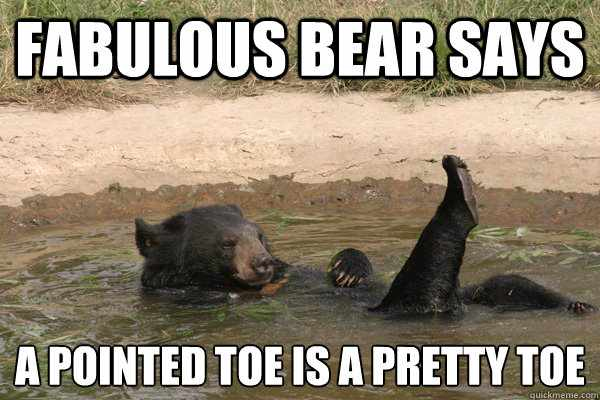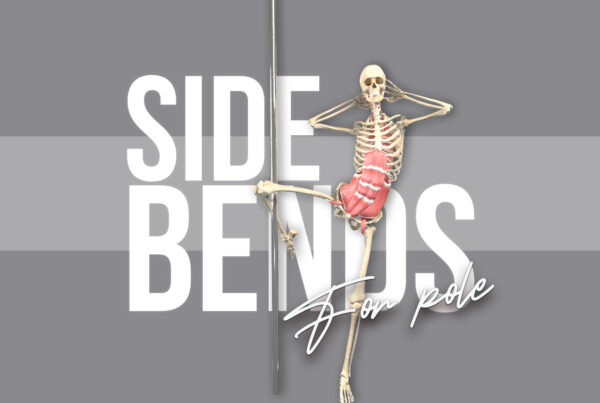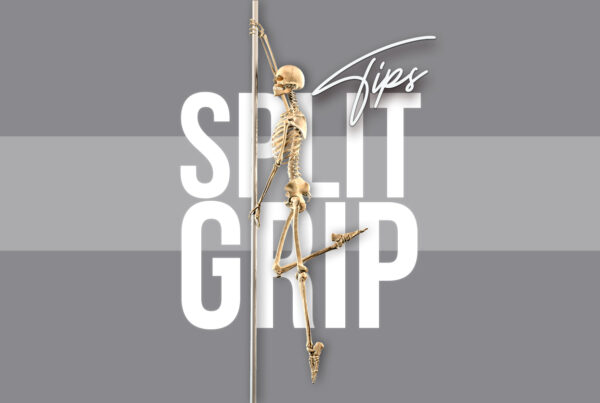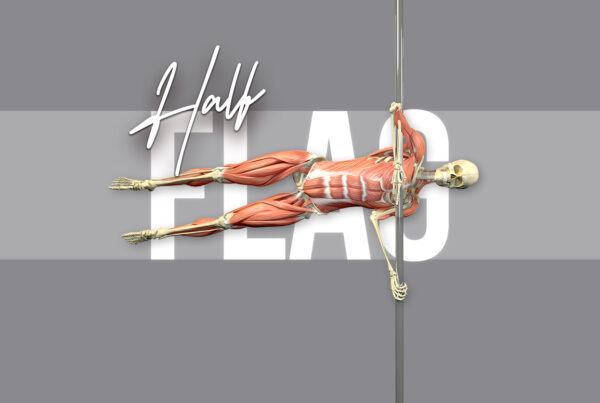I’ll be honest here. The whole toe pointing thing remains a constant battle for me.
I am one of those, let’s say, “grace-challenged” polers with zero natural flow and no dance background to tango swoop back on.
But fortunately, like most challenges in pole, it turns out that toe pointing is all about strength! Hurrah!
If I can muscle my way to fake-grace and elegance, then you betcha that’s what imma do! Who’s with me?
Strength and conditioning for toe pointing?
A beautifully arched and pointed foot is like the cherry on top of every single pole trick, spin and pose; the finishing touch that completes the lines of an already badass pole masterpiece.
As a strength and conditioning coach specialising in working with pole dancers, increasing strength to improve lines is something my clients frequently need help with. But, unsurprisingly, ‘toe pointing for pole dance’ is not a topic covered in the ‘Strength and Conditioning for Sports’ Coach manual.
As a result, I’ve done my fair share of anatomical geeking-out on the subject of toe pointing.
And because this has also been (and still is) a very personal challenge for me, I’ve had my own revelations along the way.
Most important of these ‘toe pointing epiphanies’ was my realisation that there was a HUGE, giant clown shoe-sized difference between what I was doing when I first started pole (i.e. when I THOUGHT I was pointing my toes) vs. what it feels like to actually point my toes.
Light bulb moment!
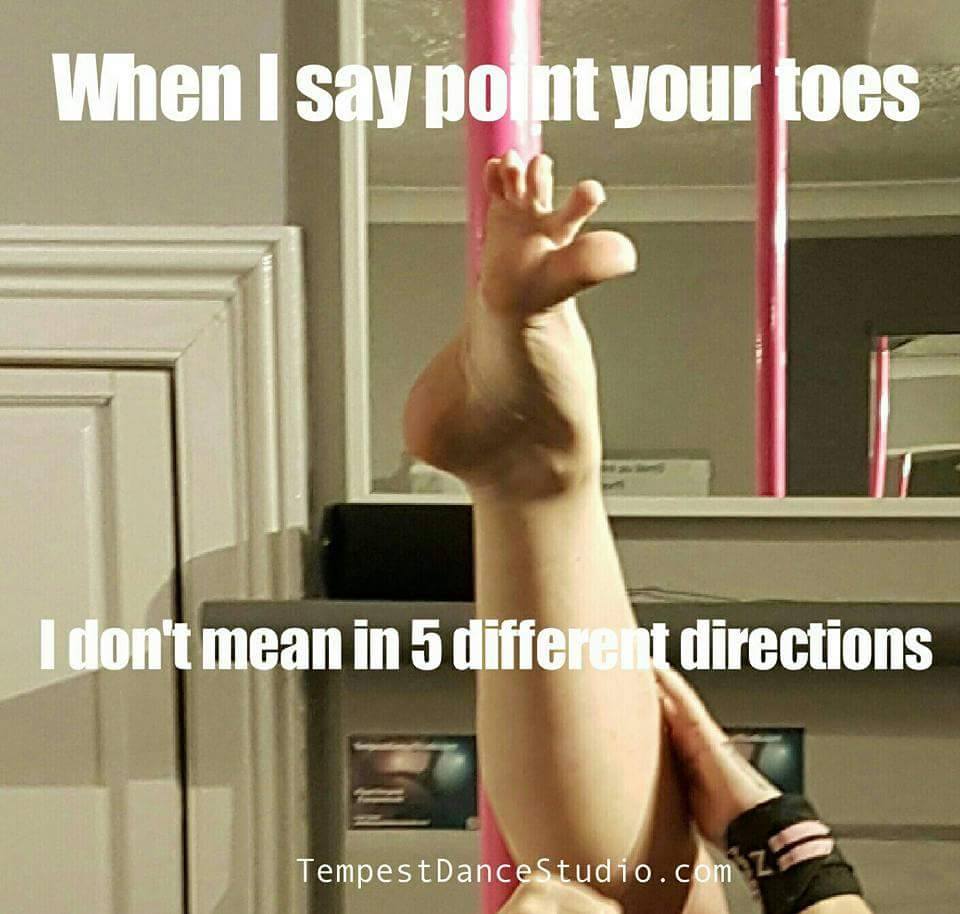
Are your feet doing what you think they’re doing?
The problem is, as we walk into our first ever pole class, slapping our big ‘ol flat flappers on the floor with every single step like pair of wet fish, most of us (and I’m definitely including myself on this list) don’t have the faintest idea what it feels like to actually point our toes.
In that honeymoon period when pole is new, Gemini and Scorpio are merely star signs, and you haven’t yet discovered the importance of cheeky cut pants, when your instructor shouts across the studio:
“Yes, yes! Awesome! Now point your damn toes!”
Our immediate response is usually: LOCK DOWN, MUTHA-SUCKAS!
If you imagine your feet taking a ride on the Hollywood Rip Ride Rockit… they’re in the front carriage and your toes are gripping that lap safety bar like a boa-constrictor…. Well, that.
But consider this. If someone asked you to elongate and point with your hand, you wouldn’t clamp your fingers into a white-knuckled death-grip claw, would you? You’d reach long and extend those pinkies as much as you could, right?
Now try and think about that same pointing extension (long toed) action with your feet. While simultaneously trying to create an arch with your foot AND extending through the entire leg.
It’s hard. Really hard.
The problem is, we don’t have much dexterity with our feet.
Use it or lose it
And the truth is, we didn’t give a second thought to what our feet were doing prior to starting pole, so now asking them to create a very specific shape they are not used to making is going to take some determined focus and, guess what? Strength and conditioning!
Leg day is so last year. I’m calling foot day!
No, seriously…
Anatomy of a toe-point
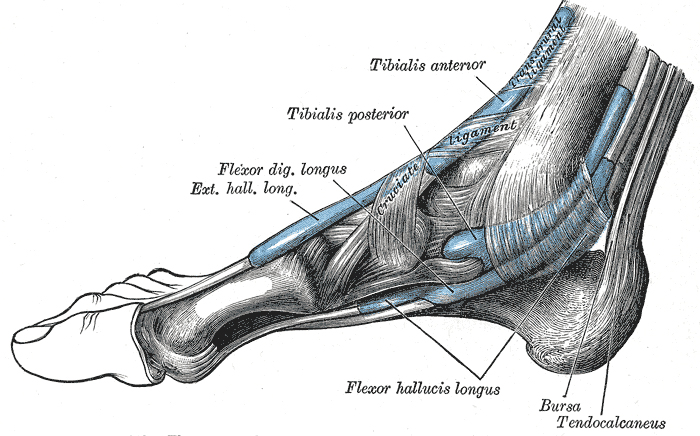 The shape of your foot is determined largely by your bones and, sadly, there’s not much we can change in terms of the boney structure of your foot.
The shape of your foot is determined largely by your bones and, sadly, there’s not much we can change in terms of the boney structure of your foot.
Buuut the good news is that the muscles and ligaments of the lower leg and feet also play an important role, too. So by mobilising and strengthening in the right way, you can improve the look of your foot arch/toe point, even if you don’t have that natural banana-foot bone structure of a ballet dancer.
To plantar flex (i.e. point) the foot requires not only very good mobility in the ankle joint and the tarsal and tarsometatarsal joints of the foot, but also adequate strength at the end-range of that mobility.
That strength comes primarily from the muscles of the lower leg, particularly the gastrocnemius and soleus (calf muscles) for plantar-flexion, and the intrinsic muscles of the foot for producing that aesthetically pleasing dancer’s arch.
Exercises for mobilising and strengthening the calves, ankles and feet will help with your toe pointing mission.
And the perfect place to start is by re-educating the mind-muscle connection with our feet and strengthening the tiny intrinsic foot muscles that our brain forgot we even had.
Here are my two favourite exercises to do just that…
-
The pen-penny drill
It might not look or feel like much is happening at first. For a lot of people, especially if you are flat-footed or overpronate, this exercise may feel a bit like to trying to wiggle your nose / twitch your ears (struggle is real).
The idea is to isolate the arch muscles, without scrunching the toes. Having to keep your big toe joint pressing down on the coin forces you to take the toes out of the equation and focus on the arch muscles only.
- Helps you understand what the ‘arch part’ of an active toe point feels like.
- Teaches you how to isolate and activate your arch muscles, so you can start to strengthen them.
- Re-establishes the mind-body connection with these muscles that (prior to pole) we never really gave a second thought to.
- Improves the definition of your foot arch = better lines. Yey!
Try 10 reps on each side, holding each one for 3 seconds or so.
If you find this easy (go you!), you can progress this by standing on one leg only and/or adding some upper body movement (slow twists to tap the wall behind you are good), while maintaining that active arch position.
-
Resisted toe points
Again, this exercise might look easy, but focus on technique here is important.
Remember that creating length through the toes will help to create a line that looks most aesthetically pleasing for your pole moves.
If we’re going to stop scrunching our feet like we’re grasping our last fiver between our toes, it’s really important to focus on keeping the toes ‘long’ in this exercise.
- Helps you understand what the foot arch activation feels like when combined with leg extension.
- Re-establishes the mind-body connection with these muscles to help ‘lengthen’ through the toes to create better lines.
- Strengthens ankles, calves and feet ‘in the air’, as they would be up the pole (rather than in a standing position).
Strong feet, strong poler
Not only will these exercises give you more control of your tootsies when you’re busting your moves on the pole, but strengthening your feet comes with a few additional benefits, too.
Most importantly, it will improve your balance and create a more stable base for EVERYTHING – from dragging yo ass around the supermarket, to squatting beast mode in the gym, to landing safely out of that new #serraflip, if you ever get brave enough to try it, that is. (Na, me neither).
The way your feet move has a big impact on the way the other muscles and joints further up the chain work. Strong feet = strong foundation. Foot day is serious business, pole friends!
So long, claw feet!
If you want to find out more about my strength and conditioning programmes for pole dancers you can find find all my 6-week training workbooks here. And if you really wanna nerd out on strength training for pole, check out my book Strength and Conditioning for Pole, which includes a whole chapter on feet and toe pointing! It really is the most comprehensive text book for pole dancers!


